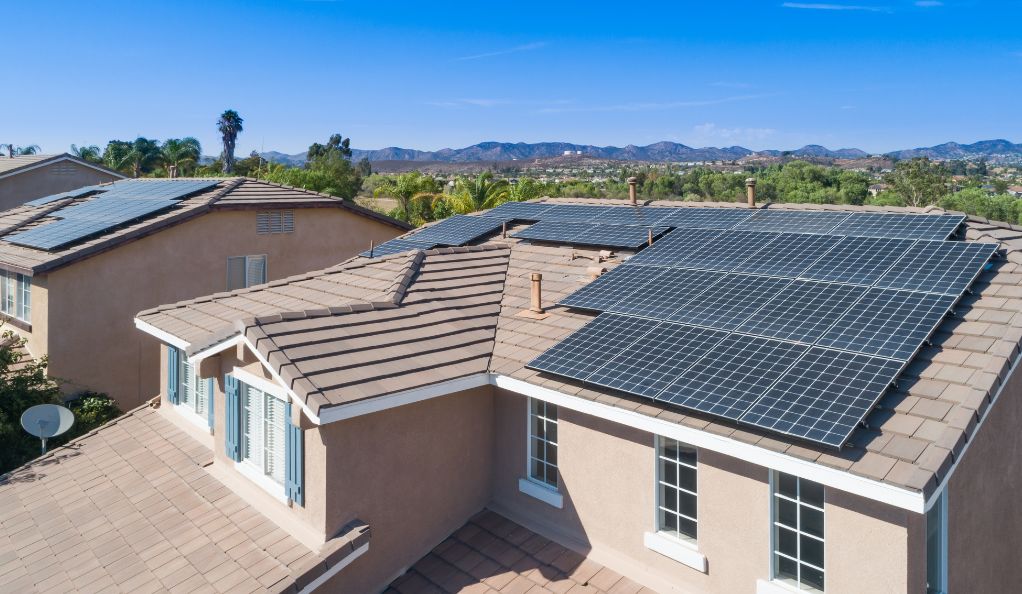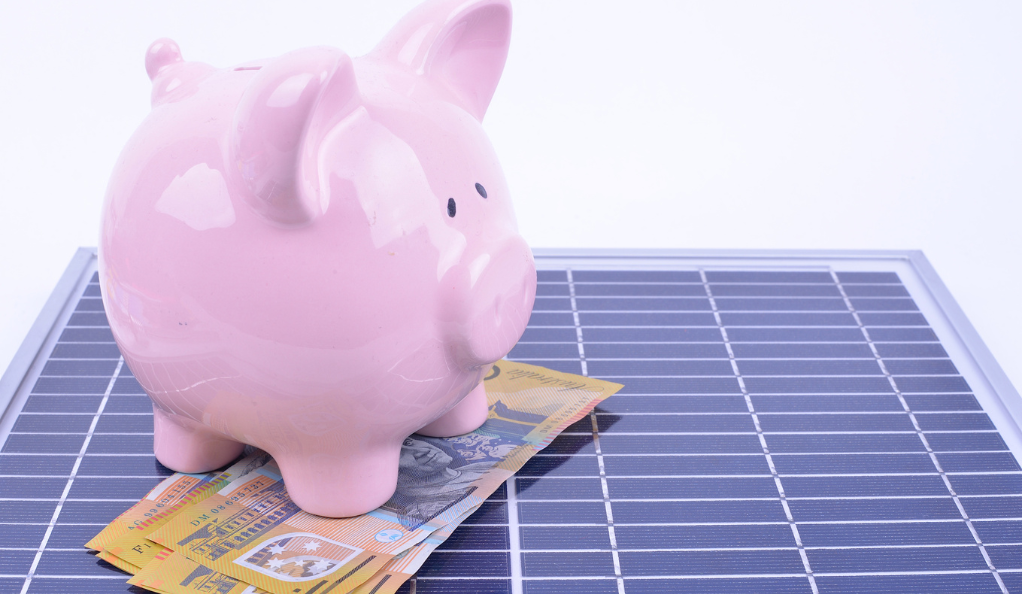Introduction to Solar Energy for Large Residences
As the demand for sustainable living grows, large residential properties are increasingly turning to solar energy for efficient and eco-friendly power solutions. This move towards renewable energy is driven by the need to reduce environmental impact and manage rising energy costs effectively.
Large homes, with their substantial energy requirements, benefit greatly from the installation of solar power systems. These systems not only offer a dependable source of clean energy but also significantly reduce utility bills. The financial aspect is particularly appealing, as solar installations can lead to considerable savings for homeowners with high energy consumption.
Advantages of Solar Energy in Large Homes
- Cost Savings: Solar power can substantially lower monthly energy expenses.
- Property Value Increase: Homes with solar energy systems often see an increase in market value.
- Environmental Benefit: Solar energy reduces greenhouse gas emissions, aligning with environmental conservation efforts.
- Energy Independence: Homeowners gain a level of freedom from utility companies and protection against fluctuating energy prices.
- Reliability: Modern solar systems are known for their durability and require minimal upkeep.
The Shift to Renewable Energy
Adopting solar energy in large residences means evaluating factors like location, sunlight exposure, and energy requirements. It represents a commitment to sustainable living and contributes to the global shift towards renewable energy sources.
Basics of Solar Power Systems for Large Homes
Solar power systems are an efficient way for large residences to harness renewable energy. Understanding their key components and functionality is essential in evaluating their suitability for your home.
Core Components
- Solar Panels: Capture sunlight and convert it into electricity.
- Inverters: Transform the direct current (DC) from solar panels into alternating current (AC) for home use.
- Batteries (Optional): Store surplus energy for later use.
- Charge Controllers: Protect batteries from overcharging.
- Mounting Systems: Secure panels on roofs or ground structures.
Working Mechanism
Solar panels use photovoltaic cells to convert sunlight into electricity. This electricity is then made usable for household appliances through an inverter. The system size and the number of panels depend on the home’s energy requirements, which can be estimated from past electricity bills.
Types of Systems
- Grid-Tied Systems: Connect to the local power grid, allowing excess energy to be fed back, often with financial credits (net metering).
- Off-Grid Systems: Independent of the grid, relying solely on solar power and batteries.
- Hybrid Systems: A combination of grid-tied and off-grid features, offering flexibility and backup.
For large homes, grid-tied or hybrid systems are typically recommended due to their ability to meet high energy demands and provide power backup.
Assessing Solar Potential for Large Homes

When considering solar energy for large residential properties, it’s important to evaluate several key factors to understand your solar potential. The condition and age of your roof are crucial, as it needs to withstand the life expectancy of solar panels (around 25-30 years). Sunlight exposure is another significant factor; obstructions like trees or buildings can impact the efficiency of solar panels. The orientation and tilt of your roof are also important, with south-facing roofs in the Northern Hemisphere generally receiving more sunlight. Your local climate and the number of sunny days per year can greatly affect solar output. Additionally, understanding your home’s energy consumption patterns is essential for sizing your solar system appropriately. Lastly, be aware of local regulations and homeowner association rules that might affect solar panel installation.
After evaluating these factors, consider different solar energy options like full ownership for maximum financial benefits, community/shared solar for those unable to host rooftop systems, solar leases for lower upfront costs, power purchase agreements for minimal initial investment, and solarize programs for group purchasing advantages. A thorough cost-benefit analysis and consultation with solar experts can guide you in making the most informed decision for your property.
Options for Solar Energy Utilization
Once you’ve determined that your large residential property is a good candidate for solar energy, the next step is to explore the different options for utilizing solar power. These options cater to various preferences and situations, from owning your system outright to participating in community solar programs.
Purchasing a Solar Energy System
Purchasing your solar system outright is often the most financially beneficial option. This approach allows you to:
- Maximize the financial benefits, including full access to tax credits and increased home value.
- Sell excess electricity back to the grid through net metering.
- Control maintenance and repairs, with many systems offering long-term warranties.
Community or Shared Solar
Community solar is an excellent option for those who can’t or prefer not to install solar panels directly on their property. This approach involves:
- Joining a group of participants to buy into a solar system collectively.
- Benefiting from solar power without the need for personal rooftop installation.
- Supporting local renewable energy initiatives.
Solar Leases
Leasing a solar energy system can be a good option if you prefer not to make a large upfront investment. Key points include:
- Using the power produced by leased equipment.
- Having fixed monthly lease payments, often lower than your typical electricity bill.
- Avoiding responsibilities for maintenance and repairs.
Power Purchase Agreements (PPA)
Under a PPA, you can host a solar system owned by a solar company and buy the electricity it generates. This option is ideal if:
- You want solar installation with little to no upfront cost.
- You prefer to pay for the electricity generated rather than the solar equipment.
- You’re looking for an arrangement with predictable energy costs.
Solarize Programs
Solarize programs are community-based projects that allow groups of homeowners to:
- Pool their purchasing power for solar installations, leading to reduced rates.
- Streamline the solar purchase process.
- Benefit from collective bargaining and shared knowledge.
Solar Power and On-Site Energy Storage
Integrating on-site energy storage with your solar power system is a game-changer for large residential properties, offering enhanced energy independence and efficiency. This section explores the benefits and considerations of incorporating battery storage into your solar setup.
Benefits of On-Site Energy Storage
- Energy Autonomy: Batteries store surplus solar energy generated during the day, which can be used at night or during periods of low sunlight, reducing reliance on the grid.
- Emergency Backup: During power outages, a solar system with battery storage can continue to provide power, ensuring uninterrupted energy supply.
- Increased Savings: By storing excess energy, you can avoid purchasing electricity from the grid during peak hours when rates are higher, leading to further cost savings.
Types of Solar Battery Storage
- AC-Coupled Storage: In this setup, the battery storage is an add-on to your existing solar PV system. It’s more flexible, as it can be installed after your solar panels are operational.
- DC-Coupled Storage: Here, all energy generated goes directly into the battery before being used in the home. It’s usually installed alongside the solar panels and is more efficient in storing solar energy.
Each type has its pros and cons regarding installation complexity, efficiency, and cost. Your choice will depend on your specific needs and the configuration of your existing or planned solar power system.
Key Considerations
- Capacity and Scalability: Determine the battery size needed based on your energy usage patterns. Some systems allow for adding additional batteries later.
- Battery Lifespan and Warranty: Check the lifespan and warranty of the batteries to ensure they align with your long-term energy goals.
- Compatibility with Solar System: Ensure the batteries are compatible with your solar panel system, in terms of voltage and capacity.
- Installation and Maintenance: Consider the installation process and ongoing maintenance requirements of the battery system.
Cost-Effectiveness and Long-Term Savings of Solar Energy Systems

For homeowners of large residential properties, understanding the cost-effectiveness and potential long-term savings of solar energy systems is crucial. This section delves into the financial aspects of solar installations, highlighting how they can be a prudent investment over time.
Initial Investment vs. Long-Term Savings
- Initial Costs: Include purchasing and installing solar panels, inverters, and, if chosen, battery storage systems. The cost varies based on the size and type of the system.
- Long-Term Savings: Solar energy systems reduce or even eliminate electricity bills. Additionally, many regions offer incentives like tax credits, rebates, and net metering that can significantly offset initial costs.
Return on Investment (ROI)
- Payback Period: The time it takes for the savings from the solar system to equal its initial cost. Typically, solar systems have a payback period of 5-10 years, depending on the size of the system and local electricity rates.
- Increased Home Value: Solar installations often increase the value of your property. Homes with solar systems can sell faster and at a higher price than those without.
Ongoing Benefits
- Reduced Carbon Footprint: Solar energy is clean and sustainable, reducing your home’s carbon emissions.
- Energy Independence: Less reliance on the grid and protection against rising energy costs.
- Minimal Maintenance Costs: Solar systems require minimal upkeep, typically involving only occasional cleaning and inspections.
Installation Process and Best Practices for Solar Energy Systems
Installing a solar energy system in a large residential property involves several key steps and best practices to ensure optimal performance and longevity. This section outlines the critical aspects of the installation process, offering guidance for homeowners.
Step-by-Step Installation Guide
- Consultation and Site Assessment: Initially, a solar expert evaluates your property to determine the best system type, size, and placement.
- Design and Planning: Based on the assessment, a customized solar system design is created, considering factors like roof space, sun exposure, and energy needs.
- Permitting: Acquire the necessary permits from local authorities. This step varies by location and may involve compliance with specific building codes and regulations.
- Installation: Professional installers will set up the solar panels, inverters, and any additional components like batteries and monitoring systems.
- Inspection and Interconnection: After installation, a local inspector reviews the system. Once approved, it’s connected to the electrical grid (if applicable).
- Commissioning and Monitoring: The system is tested to ensure it operates correctly, and homeowners are shown how to monitor and maintain their system.
Best Practices for Solar Installation
- Choose Reputable Installers: Select certified and experienced professionals for high-quality installation and reliable service.
- Quality Equipment: Opt for high-efficiency solar panels and inverters to maximize energy production.
- Regular Maintenance: Although minimal, regular checks and cleaning can prolong the system’s lifespan and efficiency.
- Consider Future Expansion: If you anticipate increased energy needs, ensure your system can be expanded easily.
Common Installation Challenges
- Roof Compatibility: Not all roofs are suitable for solar panel installation without modifications.
- Weather and Climate: Local weather conditions can impact the installation timeline and system design.
- System Integration: Integrating solar power with existing electrical systems can be complex and requires expert handling.
Conclusion
Solar energy systems offer a compelling blend of environmental and financial benefits for large residential properties. They represent not just a step towards reducing utility costs but also a commitment to sustainable living.
Understanding the essentials of solar power and assessing your home’s suitability are the first steps. The choice between purchasing, leasing, or joining a community solar program depends on individual preferences and circumstances. The addition of on-site energy storage further enhances the system’s efficiency and reliability.
While the initial investment may be notable, the long-term savings, both economically and environmentally, are significant. The installation process, emphasizing quality and expert involvement, is crucial for the system’s success.
